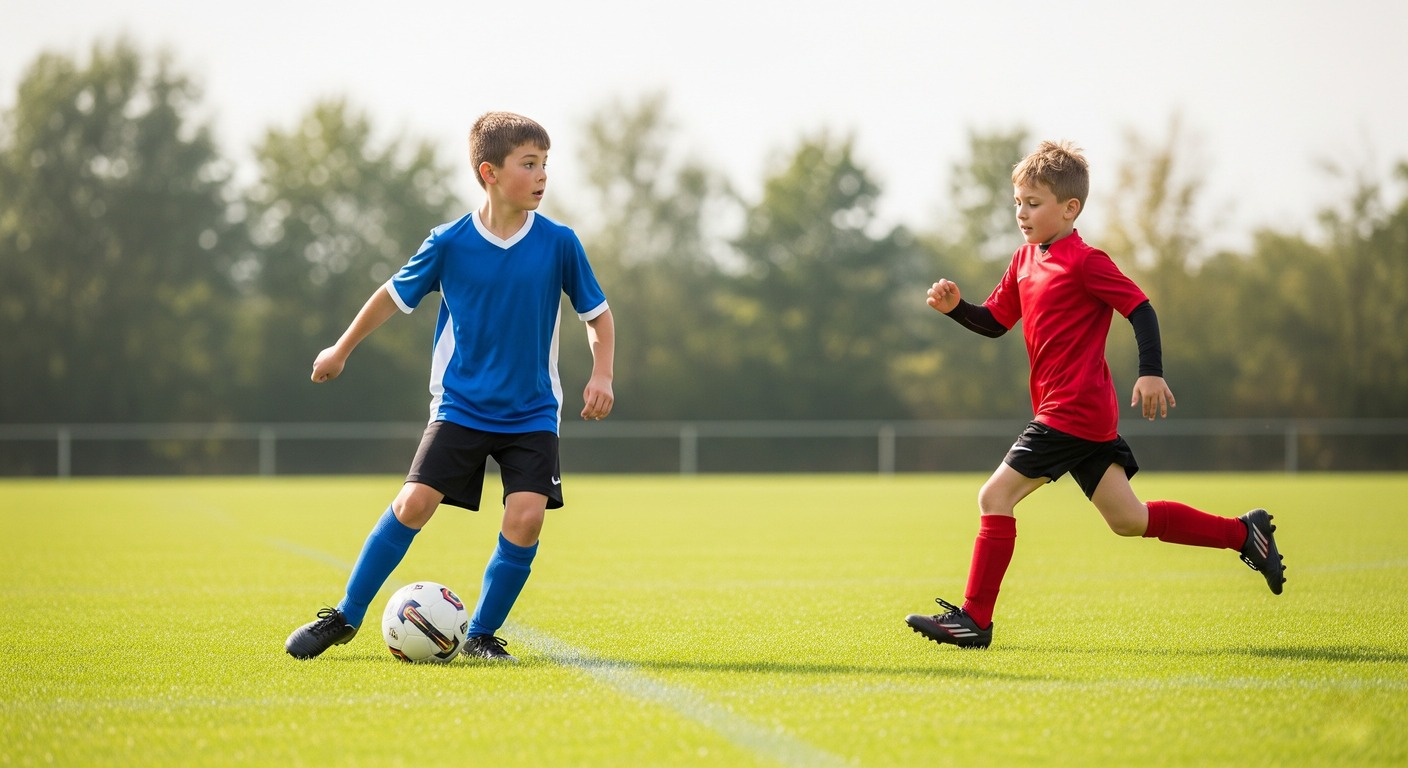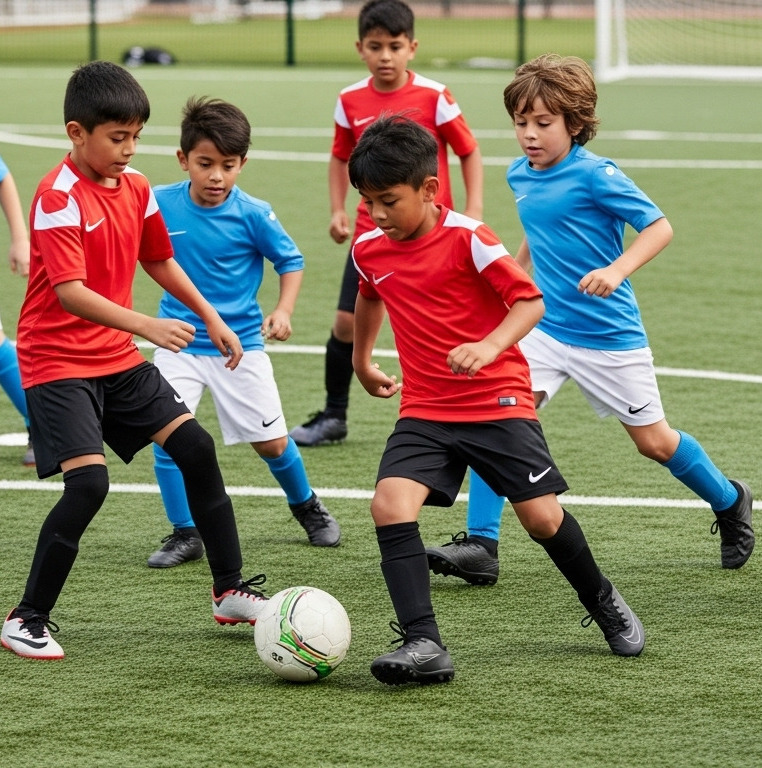The Football Overlap Explained: Tactics, Roles, and Drills
Written in a tactical yet accessible tone, this piece gives a clear, usable introduction to overlapping football tactics, aimed at youth coaches, players, and curious fans. Structure, keywords, and key coaching insights are all naturally embedded.
What is Overlapping in Football?
In simple terms, an overlap in football is when a player (usually a fullback) makes a forward run on the outside of a teammate (typically a winger or midfielder) to create an attacking advantage. The overlap creates either a passing option or forces the defender to make a difficult decision - follow the runner and open space inside, or stay tight and risk the runner receiving the ball freely on the wing.
When people ask "what is an overlap?", this is the essence: one player runs beyond another in wide areas, on the outside, often with precise timing and intent to stretch the defence. Overlapping allows the ball-carrier to pull markers inward, then release a teammate into unmarked space near the touchline.
It’s a classic move in wing football, especially when teams want to create 2v1 situations against a single wide defender.
How Overlapping Works in Match Play
Think of the overlap as a combination - a pattern of movement between two players, designed to force defensive errors. The sequence usually involves:
-
Ball played to the wide player (winger or wide midfielder)
-
Simultaneously, the fullback runs around them, wide and forward (the overlap)
-
The defender marking the winger must decide:
-
Press the ball-carrier and leave the run unchecked
-
Stay back and risk giving the ball-carrier space to attack
-
These small choices add up. If the overlap is ignored, the runner floods into the attacking third - often toward the byline. If the defender switches off, the ball carrier can slip a timed pass into space.
In modern football, this movement is most dangerous when done at speed and with clear roles. Good teams don’t overlap aimlessly. They time the run to force rotations, stretch defensive blocks, and open space either for a cross or an underlapping runner arriving late.
Classic example: Jordi Alba overlapping Lionel Messi during their years together at Barcelona. The moment Messi received the ball, Alba would sprint beyond, giving Messi options - cut inside, hold, or release the ball. This repeatable movement broke down low blocks over and over.

The Role of Fullbacks and Wingers
In most systems, the overlapping run in football is the job of the fullback. The winger receives the ball, faces up to their marker, and the fullback offers a decoy or option by driving beyond on the outside.
But it only works when roles are disciplined and movements are fast.
The Fullback’s Responsibility
-
Start from deep, time the run late
-
Stay wide - the whole point of the run is to open up the flank
-
Offer real pace - a slow overlap is easy to defend
-
Either receive and cross or allow the winger to cut inside
The Winger’s Decision-making
-
Read the fullback’s run
-
Either cut inside off the movement, or draw the defender and slip the overlap in
-
Maintain spacing - don’t drift too wide
In systems like Guardiola’s or Klopp’s, fullbacks often act as playmakers. They either make the overlap football scenario happen from deeper positions (“inverted” runners), or they stretch with real width. In both cases, communication between the wide line and build-up line is key.
Overlapping vs Underlapping: Key Differences
While overlapping involves a run to the outside, underlapping means running inside of the ball-carrier, often between a centre-back and a fullback. Both create overloads, but where and how they apply depends on shape and roles.
Overlapping:
-
Run goes outside the dribbler, near the touchline
-
Often used in wide or flat systems (4-4-2, 4-3-3)
-
Opens the channel for crosses, cutbacks, or dragging the defences wide
Underlapping:
-
Run goes inside, toward goal - in the half-space
-
Can come from midfielders or inverted wide players
-
Often used when defenders over-commit wide
-
More aggressive - often ends in pullbacks or shots
Good teams know when to mix the two. When fullbacks only overlap, defenders adapt. When you blend overlaps and underlaps in a vertical overlap pattern - inside and outside lanes filled together - you pin the back line and force dangerous choices.
Tactical Benefits of Overlapping Runs
A well-executed overlap does more than create a crossing angle. It opens the field, stretches opponents, and pulls players out of shape.
Key tactical advantages:
Creates Width Under Pressure
Instead of forcing tricky interior passes, overlaps offer relief balls outside. This keeps the attack controlled and allows teams to play forward without rushing.
Generates 2v1 Overloads in Wide Areas
When a winger and fullback combine well on the outside, it forces defenders to either get help or become exposed. In youth football especially, this is a strong pattern to teach for simple buildup play.
Disorganises Low Blocks
Blunt back lines often sit deep and tight. Overlaps, especially late ones, upset the picture - pulling defenders into wide chases and dragging others with them.
Delivers Dangerous Cutbacks
Whether played to the byline or edge of the box, a well-timed overlap often results in a cross into space - not just a hopeful delivery. Coaches should teach these cutbacks intelligently, not constantly aim for the far post.
In high-tempo pressing sides or transitional sides, overlaps also deliver extra running - pulling defensive midfielders wide and opening gaps centrally for late runners.
How to Coach Overlapping in Youth Football
For young players, overlaps must first be taught as movements with purpose. Simply running past a teammate doesn’t create mastery. You need intention, timing, and understanding between roles.
Start small. Use 2v1 and 3v2 patterns in wide channels. Then, bring in the larger tactical context later. The basics should cover:
-
Recognising trigger points for the run (weight of the winger’s touch, body language, space)
-
Timing - not too early or you’ll be offside; not too late or the move collapses
-
Angles of support - the fullback must stay in the peripheral vision of the winger
One key lesson: young players often overuse the overlap. Coaches must teach the cues that show when it’s effective - not use it blindly. In We Make Footballers sessions, overlap principles are often taught early using short-sided games with channel zones - teaching not just how to run, but how to read momentum and flow.
Training Drills for Overlapping Movement
Here are three easy-to-adapt drills to teach and reinforce overlapping football concepts.
Pass-and-Overlap Channel Drill
-
Setup: 2 wide players + 1 defender in a narrow corridor
-
Pattern: Winger receives, fullback starts behind and overlaps
-
Defender must delay play
-
Winger decides: pass the overlap, cut inside, or delay
Focus: decision-making and timing. Add a second defender to increase pressure.
Triggered Overlap Drill (Central Build to Wide Overlap)
-
Start play centrally with a midfielder
-
Ball moved into wide zone; fullback overlaps late
-
Midfielder makes late support run (underlap option)
-
Wide combinations finish with a cross or pull-back
Variation: mix underlaps and overlaps - then freeze frame and ask players why the right option worked
Wide Zone Rondo into Overlap Finish
-
4v2 rondo in central grid
-
On cue, pass delivered wide
-
Fullback overlaps at pace, receives, and crosses
-
Striker attacks cross while midfielder provides support
This pattern reinforces: patience in build-up, sharp passing, and wide sprint timing.
These drills can be adapted and layered up - especially with small groups. At We Make Footballers, overlapping runs are built into passing rounds, game formats, and even warm-ups, so the habit becomes natural and fluent under pressure.
Conclusion
Overlapping runs in football are not just about going wide. They’re about disrupting defenders, offering support, and changing the picture for the opponent - all without needing extra risk or complication.
A well-timed footballer run creates problems and options, especially when defenders hesitate. Add the ability to mix these wide overlaps with deeper underlaps, and a team quickly becomes difficult to contain.
From touchline patterns at elite level to developmental drills in youth academies, overlapping football tactics remain a timeless part of the game - simple in idea, but powerful when executed well.
Teach it early, rehearse it with structure, and let young players explore when to run the football and who to run for. The movement might be off the ball - but the impact is often what wins the match.



